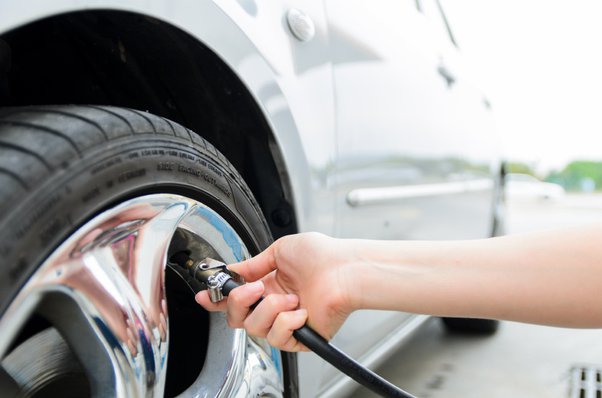How to Take Air Out of a Tire: A Comprehensive Guide
Taking air out of a tire is a process that requires careful attention to ensure it is done safely and correctly. This guide will walk you through the steps to deflate a tire, whether you need to adjust the air pressure for better traction, prepare the tire for storage, or repair a puncture.
Why Deflate a Tire?
There are several reasons why you might need to take air out of a tire:
- Adjusting Air Pressure:
- Different driving conditions, such as off-road or snowy terrain, may require lower tire pressure for better traction.
- Some vehicles may need lower pressure for towing or hauling heavy loads.
- Storage:
- Deflating tires can help prevent flat spots and damage when storing a vehicle for an extended period.
- It can also reduce the risk of tire cracking due to UV exposure and ozone.
- Repair:
- Deflating a tire is necessary before removing it from the rim for repair or replacement.
Steps to Take Air Out of a Tire
Here is a step-by-step guide on how to safely deflate a tire:
- Prepare the Area:
- Ensure you are in a safe location, away from traffic and any hazards.
- Turn off the engine and engage the parking brake.
- Locate the Valve Stem:
- Find the valve stem on the outside of the tire. It is the part where you add air.
- Remove the Valve Cap:
- Take off the valve cap to expose the valve stem.
- Use a Tire Pressure Gauge:
- Attach a tire pressure gauge to the valve stem to check the current pressure.
- If you do not have a gauge, you can use the gauge at a gas station.
- Deflate the Tire:
- Press the center of the valve stem to release air. You will hear a hissing sound as the air escapes.
- Use the gauge to monitor the pressure as you deflate the tire.
- Check Pressure Regularly:
- Continue to check the pressure with the gauge until you reach the desired level.
- If you are completely deflating the tire, ensure it is fully flat before proceeding.
- Replace the Valve Cap:
- Once you have reached the desired pressure or fully deflated the tire, replace the valve cap to protect the valve stem from dirt and moisture.
Safety Precautions
Deflating a tire can be hazardous if not done correctly. Here are some safety precautions to consider:
- Ensure the Vehicle is Secure:
- Make sure the vehicle is on a level surface and the parking brake is engaged.
- Use wheel chocks if you are on an incline.
- Avoid Over-Deflation:
- Do not completely deflate a tire unless necessary, as this can cause damage to the tire or wheel.
- Always refer to your vehicle’s owner’s manual for recommended tire pressures.
- Use Proper Tools:
- Use a tire pressure gauge to ensure accurate readings.
- Avoid using sharp objects to deflate the tire, as this can damage the valve stem.
Additional Tips
- Check Tire Pressure Frequently: Regularly checking tire pressure can help maintain optimal tire health and performance.
- Use a Tire Deflator Tool: For precise control over air release, consider using a tire deflator tool, which can be purchased at most auto parts stores.
Table: Key Details for Deflating a Tire
| Component | Details |
|---|---|
| Location | Valve stem on the outside of the tire. |
| Steps | 1. Prepare the area 2. Locate the valve stem 3. Remove the valve cap 4. Use a tire pressure gauge 5. Deflate the tire 6. Check pressure regularly 7. Replace the valve cap. |
| Safety Precautions | Ensure the vehicle is secure, avoid over-deflation, use proper tools. |
| Additional Tips | Check tire pressure frequently, use a tire deflator tool if needed. |
| Source | Tire – Wikipedia |
FAQ Section
Q: Why would I need to take air out of a tire?
A: You might need to deflate a tire to adjust air pressure for better traction, prepare the tire for storage, or repair a puncture.
Q: How do I safely deflate a tire?
A: Ensure the vehicle is secure, locate the valve stem, remove the valve cap, use a tire pressure gauge, deflate the tire slowly while checking the pressure, and replace the valve cap once done.
Q: What are the safety precautions when deflating a tire?
A: Ensure the vehicle is on a level surface with the parking brake engaged, avoid over-deflation, and use proper tools like a tire pressure gauge.
Q: Can I completely deflate a tire?
A: It is generally not recommended to completely deflate a tire unless necessary, as this can cause damage to the tire or wheel. Always refer to your vehicle’s owner’s manual for recommended tire pressures.
Q: How often should I check tire pressure?
A: It is recommended to check tire pressure at least once a month and before long trips to ensure optimal tire health and performance.
Q: What tools do I need to deflate a tire?
A: You will need a tire pressure gauge and possibly a tire deflator tool for precise control over air release.
Conclusion
Deflating a tire is a straightforward process that requires attention to safety and proper technique. By following the steps outlined above, you can ensure that you deflate your tire safely and effectively. Remember to always refer to your vehicle’s owner’s manual for specific guidelines on tire pressure and maintenance.This comprehensive guide aims to provide readers with a clear understanding of how to take air out of a tire, ensuring they can perform this task with confidence and safety.



